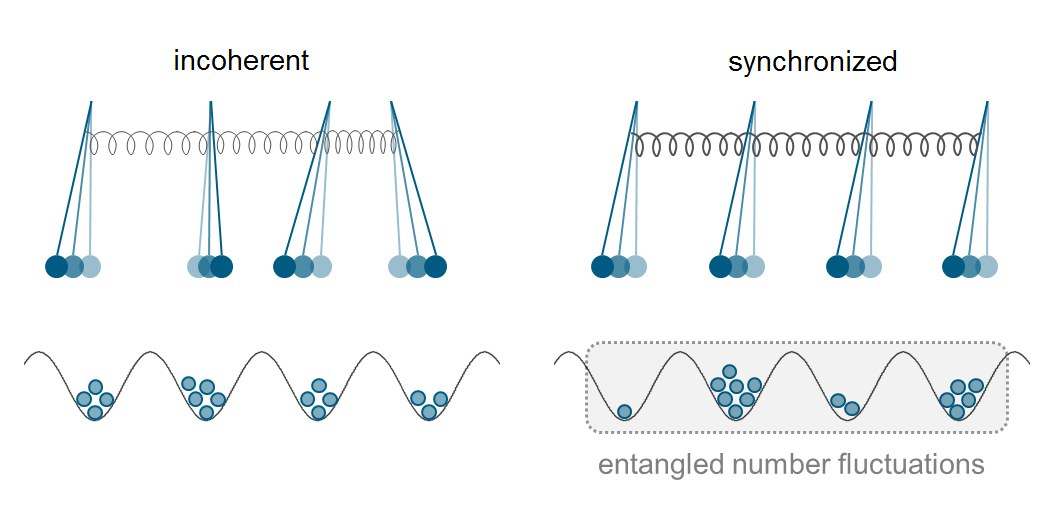Synchronization Effects in the Quantum World
Jülich, 12 March 2017 – A German–Italian team of researchers headed by the Jülich physicist Dirk Witthaut was able to verify a direct link between classical synchronization and quantum entanglement. The scientists examined a certain type of coupled quantum systems which can be implemented in experiments using Bose–Einstein condensates. They combined the classical theory of synchronization with simulations of quantum dynamics – and were able to show that classical synchronization predicts the development of entangled quantum states. The findings were published today in the journal Nature Communications.
The understanding of dynamic collective phenomena has long been one of physics’ greatest challenges. The link between collective phenomena in the classical world and in the quantum world is still largely unknown. Synchronization – the link between the states of coupled measured values – is one of the basic collective dynamics phenomena in the classical systems of physics, chemistry, and biology. Entanglement, in contrast, is a purely quantum-mechanical phenomenon in many-body quantum systems.

Original publication: Classical synchronization indicates persistent entanglement in isolated quantum systems, Dirk Witthaut, Sandro Wimberger, Raffaella Burioni, Marc Timme
Nature Communications, published 12 April, DOI: 10.1038/NCOMMS14829
Contacts:
Dr. Dirk Witthaut
Institute for Energy- and Climate Research
Systems Analysis and Technology Evaluation (IEK-STE)
Tel.: +49 2461 61-3397
Email: d.witthaut@fz-juelich.de
Press contact:
Dr. Regine Panknin, press officer
Forschungszentrum Jülich
Tel.: +49 2461 61-9054
Email: r.panknin@fz-juelich.de
